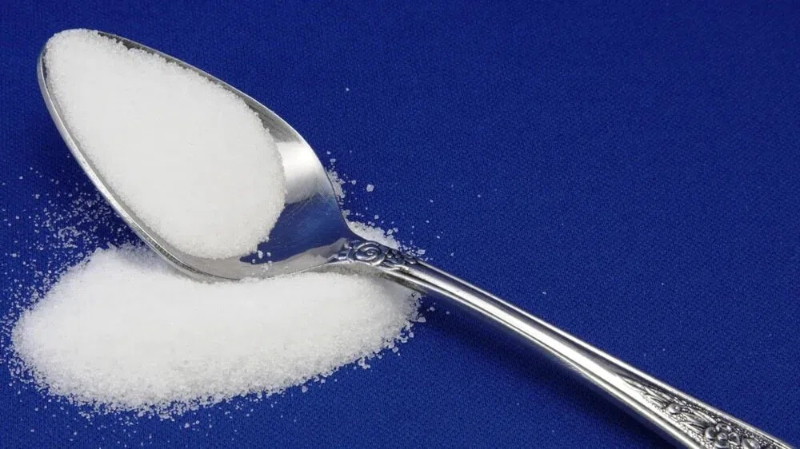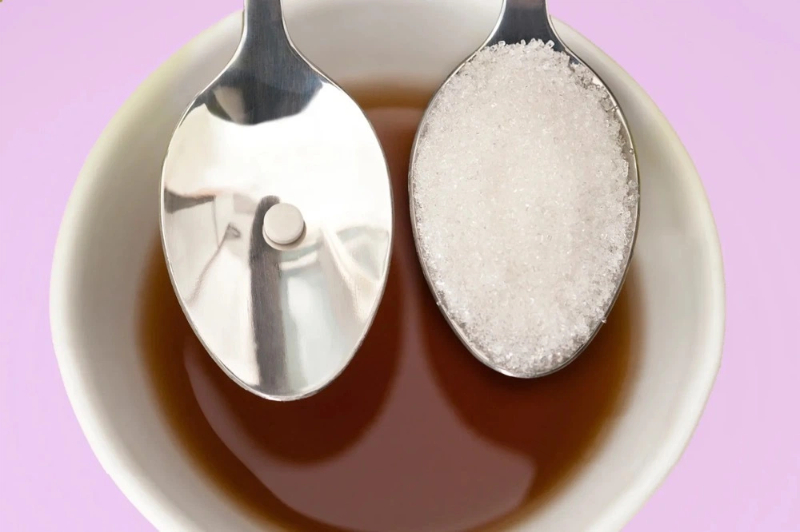Views: 222 Author: Sara Publish Time: 2025-10-26 Origin: Site








Content Menu
● Aspartame: Chemical Nature, Use, and Regulatory Stance
● Carcinogenic Potential: What the Evidence Suggests
● Biological Mechanisms and Systemic Effects
● PKU and Phenylalanine Labeling
● Pregnancy, Development, and Childhood Considerations
● Safety, Labeling, and Consumer Choice
● Natural Versus Artificial Alternatives
● Clinical and Population-Level Evidence: A Balancing Act
● Industry Implications and Product Development
● Case Studies and Public Health Messaging
● FAQ
>> 1. Is aspartame banned in any major markets?
>> 2. Can aspartame cause cancer?
>> 3. Why is aspartame dangerous for people with PKU?
>> 4. What are common symptoms of aspartame sensitivity?
>> 5. What is the recommended safe daily intake of aspartame?
Aspartame is a widely used artificial sweetener that has shaped the modern dietary landscape by enabling low- or zero-calorie options across beverages, desserts, and many packaged foods. Its prominence stems from its intense sweetness—about 200 times sweeter than sugar—paired with negligible caloric contribution, making it highly attractive for weight management and glycemic control strategies. However, as a chemical substance with complex metabolic pathways, aspartame has long been the subject of extensive safety reviews, regulatory evaluations, and ongoing scientific inquiry. This extended examination synthesizes core findings, debates, and emerging insights to help readers understand the potential dangers associated with aspartame, the contexts in which these risks might manifest, and how industry practices intersect with consumer health.

Aspartame is the methyl ester of a dipeptide composed of aspartic acid and phenylalanine, with a methanol component generated upon digestion. When consumed, aspartame is hydrolyzed in the gut to its constituent parts: phenylalanine, aspartic acid, and methanol. Each of these metabolites has biological activity, and in aggregate, they contribute to the physiological profile associated with aspartame intake. The product is widely embedded in foods and drinks marketed as sugar-free or low-calorie, extending across soft drinks, chewing gum, yogurts, desserts, and even certain medicines and vitamin supplements.
Regulatory bodies have historically evaluated aspartame for safety at specified intake levels. The accepted daily intake (ADI) values have varied by region and over time, reflecting evolving scientific judgments. In the United States, a commonly cited ADI has been 50 milligrams per kilogram of body weight per day, while in the European Union an ADI of 40 mg/kg body weight per day has often been used. These thresholds are designed to be well above typical consumer consumption in order to provide a margin of safety. In 2023, high-profile risk assessments by international bodies recognized a cautious stance: while not indicating an immediate or universal danger at everyday consumption levels, they underscored the need for continued research into potential long-term effects and effects in sensitive populations. This nuanced position leaves room for ongoing discussion and refinement as new evidence emerges.[1][2][3]
One of the most debated aspects of aspartame is its potential to influence cancer risk. In 2023, the International Agency for Research on Cancer (IARC) classified aspartame as possibly carcinogenic to humans (Group 2B), a designation based on limited evidence from studies in humans and animals that suggested associations with certain cancers, including liver cancer in some experimental contexts. This classification is a hazard identification, not a definitive measure of causation. It indicates that there is enough signal to warrant careful consideration and further investigation, rather than a firm conclusion that aspartame causes cancer under normal consumption patterns. Regulatory authorities around the world have cautioned that this label does not automatically translate into actionable risk at typical intake levels and emphasize that ADI levels remain the standard benchmark for safety assessment. Nonetheless, the IARC classification has intensified scrutiny of aspartame in scientific literature and public discourse, prompting researchers to examine potential mechanisms and context-dependent effects, including interactions with gut microbiota, metabolic pathways, and chronic exposure scenarios.[2][5][8][1]
Beyond cancer risk, aspartame's metabolites have been studied for potential systemic impacts, including effects on the nervous system, metabolism, kidneys, and liver. Phenylalanine, a component of aspartame, can cross the blood-brain barrier and influence neurotransmitter synthesis, which has led to hypotheses about mood, cognitive function, and behavioral effects in sensitive individuals or under high intake. Aspartic acid, an excitatory neurotransmitter, could theoretically contribute to excitotoxic signaling in certain contexts, although translating these findings into clear clinical outcomes in humans remains challenging.
Metabolic considerations center on how artificial sweeteners may influence insulin signaling, glucose tolerance, and appetite regulation, with some studies suggesting associations between long-term consumption and altered metabolic risk profiles. The gut microbiome represents another frontier of interest: alterations in microbial composition and metabolic outputs could mediate downstream effects on energy balance, inflammation, and metabolic health, though results across studies are heterogeneous and often dependent on the broader dietary pattern.[7][11][1]
Renal and hepatic considerations also appear in the literature, particularly with chronic, high-level exposure. Some investigations have reported markers of oxidative stress, hepatic steatosis in animal models, and indicators of kidney stress in certain populations. The clinical significance of these findings for typical consumer use is not universally agreed upon, but they contribute to a prudent view that cumulative exposure and individual susceptibility should be considered.[4][1]
Phenylalanine is one of the core metabolites released upon aspartame digestion. For individuals with phenylketonuria (PKU), a metabolic disorder that impairs phenylalanine processing, this exposure can pose serious health risks, including potential neurodevelopmental harm. Consequently, products containing aspartame are required to carry warning labels for phenylketonurics to help those with PKU avoid phenylalanine intake. This labeling requirement is a critical safety feature that many safety-sensitive consumers rely on to manage dietary choices.[11]
Emerging literature has explored the potential effects of maternal aspartame intake on offspring development and health outcomes. Some observational data have linked higher maternal consumption of aspartame-containing products to increased risks for certain pediatric health conditions, such as asthma or allergic diseases in children, though findings across studies have not always been consistent or strong enough to establish causality. The potential for developmental programming via early-life exposure is an area of active investigation, with researchers emphasizing the need for robust, prospective data and careful control of confounding dietary factors. Pregnant individuals and parents of young children may wish to exercise caution and consider limiting intake when possible, particularly in the context of overall dietary quality.[6][1]

Given the array of data and interpretations, consumer safety hinges on transparent labeling, rigorous manufacturing controls, and balanced interpretation of the literature. Regulatory agencies emphasize that conventional consumption patterns within established ADI limits do not constitute a known, universal cancer risk and remain broadly safe for the general population. However, divergent views exist, and some researchers advocate for more conservative consumption, especially among vulnerable groups such as pregnant women, children, individuals with PKU, and those with preexisting metabolic or neurological conditions. Clear labeling—detailing exact sugar alternatives per serving, explicit phenylalanine content, and serving size information—can empower consumers to make informed decisions aligned with personal health goals.[5][8][2]
As public interest in health and wellness grows, many manufacturers and consumers are exploring natural sweeteners that can offer sweetness without some of the potential concerns associated with synthetic compounds. Stevia, monk fruit extract, allulose, and related high-intensity natural sweeteners are increasingly used in reformulations and new product introductions. These alternatives may present different safety profiles, regulatory considerations, and flavor implications, influencing product development strategies for food and beverage manufacturers. For a factory specializing in natural sweeteners, polyols, and dietary fibers, this shift toward cleaner label ingredients aligns with market demand for transparent, health-oriented solutions. It also highlights the importance of robust formulating and testing capabilities in blended sweetener systems to achieve comparable taste and functionality without compromising safety.[10][12][1]
The clinical evidence on aspartame, especially regarding cancer risk, is characterized by a spectrum of findings ranging from reassuring to cautious. Large-scale reviews and meta-analyses have generally not demonstrated a clear causal link between aspartame consumption at typical exposures and cancer in the general population. Yet, some studies have reported associations under specific circumstances or subgroups, and novel methodologies (such as network toxicology and systems biology approaches) have been used to explore mechanistic hypotheses. This evolving landscape underscores the need for ongoing high-quality longitudinal research, standardized exposure assessments, and careful consideration of confounding variables in observational studies. Regulatory agencies continue to monitor the literature and update guidance as warranted by new evidence.[3][8][1]
From a manufacturing perspective, the safety profile of aspartame informs decisions about ingredient selection, formulation strategies, and regulatory compliance in OEM/ODM settings. Companies that develop blended sweeteners and functional ingredients can play a pivotal role in helping partners navigate taste, texture, stability, and labeling requirements. The move toward natural sweeteners and clean-label formulations reflects consumer preferences for transparency and perceived safety, while still acknowledging the functional roles that sweeteners play in texture, mouthfeel, and palatability. A responsible approach combines rigorous product testing, sensory optimization, and clear labeling to deliver products that meet safety standards and consumer expectations.[12][1]
Public health communication around aspartame often emphasizes balanced information: acknowledging potential concerns while reinforcing evidence that typical consumption remains within safe limits for the general population. Case studies showing shifts in consumer behavior in response to regulatory updates or new scientific findings illustrate how risk perception can influence dietary choices and product formulation. Effective messages typically stress moderation, transparency, and the availability of safer or more acceptable alternatives for those who wish to limit artificial sweetener exposure.[2][5][10]
The question of whether aspartame poses dangers cannot be answered by a single, universal statement. The current consensus among major regulatory bodies supports safety within established intake limits for the general population, while independent researchers and some systematic reviews raise questions about potential carcinogenic signals, neurological effects, metabolic disruptions, and organ-specific risks under certain conditions. The presence of aspartame in everyday foods—alongside the broader landscape of sugar substitutes—requires careful consideration of individual health status, dietary patterns, and the cumulative effects of long-term exposure. In light of new evidence and evolving scientific methods, continued research, rigorous safety evaluations, and transparent labeling will remain essential. For manufacturers, this means balancing consumer demand for taste and convenience with safety considerations, pursuing formulations that favor natural or safer alternatives without sacrificing product quality. Readers are encouraged to stay informed about emerging studies, review regulatory updates, and consult healthcare professionals when making dietary choices related to aspartame.[8][1][3][2]

Aspartame is not broadly banned in major markets, but some jurisdictions have imposed restrictions or warnings in specific contexts, and regulatory reviews continue as new data emerge.[5][2]
IARC classifies aspartame as possibly carcinogenic to humans (Group 2B), indicating a potential signal that requires further study, while many regulatory agencies maintain safety within established ADIs for typical consumption.[2][5]
Phenylalanine, a component of aspartame, accumulates in people with PKU due to impaired metabolism, making the compound strictly contraindicated for this population to prevent neurological harm.[11]
Some individuals report headaches, mood changes, digestive discomfort, or skin reactions after consumption; however, findings vary, and causality is not universal.[13][10]
Regulatory bodies have upheld an ADI around 40–50 mg/kg body weight per day, with practical implications translating to several cans of diet beverages for an average adult, depending on regional guidance.[3][2]
[1](https://pmc.ncbi.nlm.nih.gov/articles/PMC12286081/)
[2](https://www.who.int/news/item/14-07-2023-aspartame-hazard-and-risk-assessment-results-released)
[3](https://www.nature.com/articles/s41598-024-62461-w)
[4](https://www.fda.gov/food/food-additives-petitions/aspartame-and-other-sweeteners-food)
[5](https://www.cancer.org/cancer/risk-prevention/chemicals/aspartame.html)
[6](https://sph.umich.edu/news/2023posts/aspartame-and-cancer-a-toxicologists-take.html)
[7](https://www.sciencedirect.com/science/article/pii/S2590113323000202)
[8](https://pubmed.ncbi.nlm.nih.gov/37323037/)
[9](https://www.cancer.gov/about-cancer/causes-prevention/risk/diet/artificial-sweeteners-fact-sheet)
[10](https://www.medicalnewstoday.com/articles/322266)
[11](https://pmc.ncbi.nlm.nih.gov/articles/PMC10459792/)
[12](https://www.caldic.com/zh-hans-cn/markets/food-beverage/beverage/)
[13](https://www.webmd.com/diet/what-to-know-about-aspartame)
